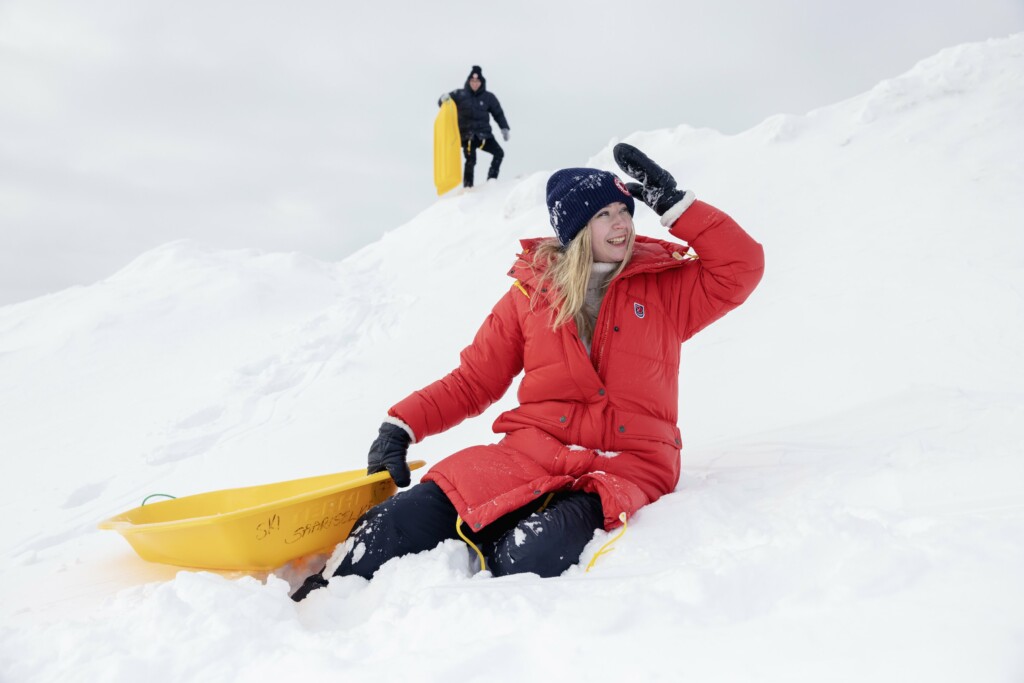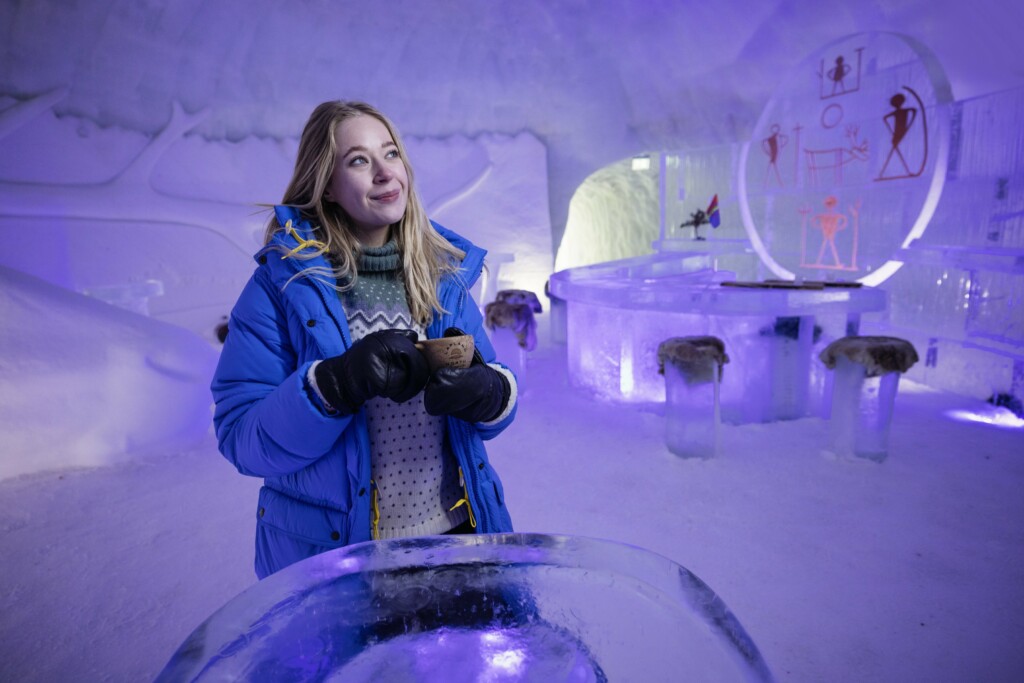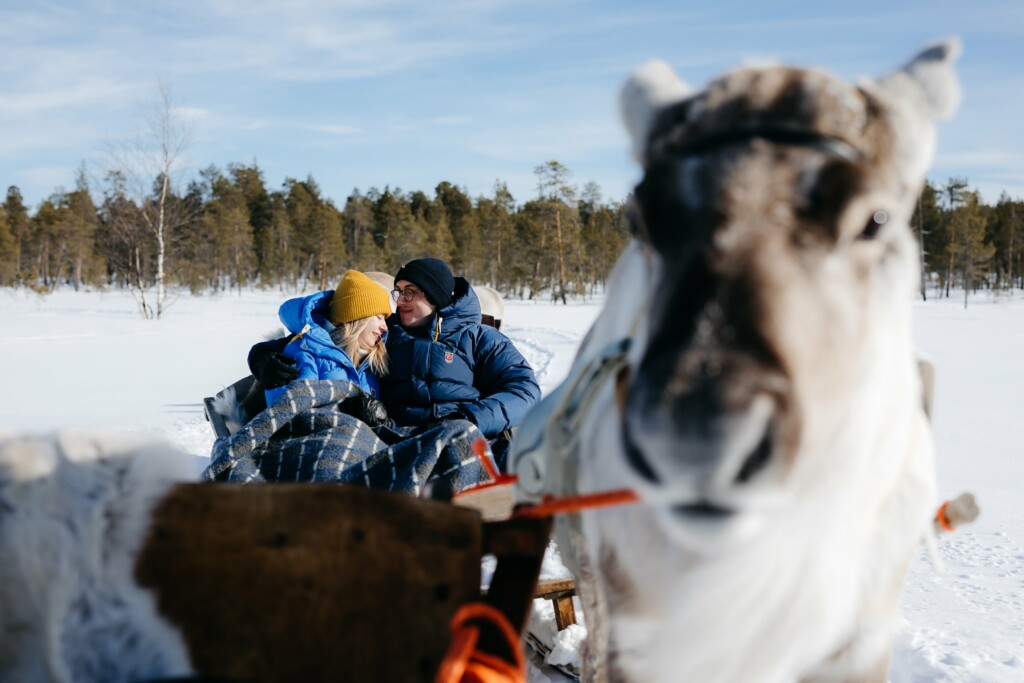Lapland, the magical Arctic region known for its enchanting winter landscapes, Northern Lights, and snow-covered wilderness, is a bucket-list destination for many. But with temperatures dipping as low as -30°C (-22°F) or even colder, dressing appropriately is essential to make the most of your winter adventure. Whether you’re enjoying a husky safari, reindeer farm visit or chasing the northern lights, here’s your ultimate guide to what to wear in Lapland North Destinations during your winter holiday.
1. Mastering the art of layering
The key to staying warm and comfortable in Lapland’s freezing temperatures is layering. This allows you to adjust your clothing as needed throughout the day, depending on the activity and weather conditions.
Base layer (thermal underwear)
Your base layer should be lightweight but effective in trapping body heat. Opt for moisture-wicking fabrics like merino wool or high-quality synthetic materials to keep sweat away from your skin.
- Recommended materials: Merino wool, synthetic blends
- Avoid: Cotton, as it retains moisture and can make you feel colder.
Mid layer (insulating layer)
The mid layer is all about insulation. A thick fleece or a woolen jumper will work well here to trap warmth.
- Best choices: Fleece jackets, down vests, or wool sweaters.
- Bonus tip: If you’re prone to getting cold easily, you might want to add an extra mid layer for good measure.
Outer layer (waterproof and windproof)
Your outer layer is your shield against the harsh elements, so it should be both windproof and waterproof. A high-quality down jacket or a well-insulated winter coat is essential for braving Lapland’s snow and ice.
- Must-have features: Waterproof, windproof, breathable.
- Pro tip: Many tour companies in Lapland North Destinations provide heavy-duty thermal suits, which you can wear over your own gear for extreme cold protection during activities like snowmobiling.

2. Stay warm from head to toe
Headwear (warm hat and face protection)
Your head is one of the most vulnerable parts of your body when it comes to losing heat, so invest in a warm, windproof hat. Beanies made from wool or fleece are excellent options. On extremely cold days, a balaclava or face mask can protect your face from frostbite.
- Recommended: Wool beanie, balaclava, or thermal face mask.
- Don’t forget: Sunglasses or snow goggles for bright snow-covered landscapes.
Gloves and Mittens

Fingers can get extremely cold in Lapland, especially if you’re taking part in activities like dog sledding or ice fishing. Layering gloves is a good idea: a thinner glove liner underneath and a thick, insulated mitten or glove on top.
- Best choices: Waterproof mittens, down-insulated gloves.
- Pro tip: Mittens generally keep your hands warmer than gloves because they trap heat better.
Thermal socks and footwear
Cold feet can ruin your day faster than anything else. Layer your socks, starting with a moisture-wicking liner followed by a pair of thick wool socks. For footwear, opt for waterproof, insulated boots that can withstand sub-zero temperatures.
- Ideal footwear: Winter hiking boots or snow boots with good grip.
- Extra tip: Heated insoles or wool-lined boots can provide extra warmth.
3. Specialty gear to wear for winter activities in Lapland

Lapland offers a variety of winter activities, and some of them may require additional gear to keep you comfortable.
For Northern Lights watching
You’ll likely be standing still for long periods under the stars, waiting for the auroras to appear. This is when the cold can really bite. Be sure to wear an extra insulating layer, and bring hand warmers or foot warmers to stay comfortable while you wait.
For snowmobiling or husky safaris
High-speed activities like snowmobiling or dog sledding expose you to wind chill, which can make the air feel significantly colder. On top of your regular gear, wear a windproof balaclava and make sure your outer layers are securely fastened to keep the cold air out.
What to wear for ice fishing
When sitting in one place for extended periods, the cold can be intense. Layering is crucial here. Insulated bib pants over your base layers and a thermal jumpsuit on top will keep you warm. Consider bringing a portable seat cushion for added insulation between you and the frozen ground. These seat cushions are often provided by the company organizing your experiences.
4. Useful extras to pack
- Hand warmers: These small, disposable heat packs can be lifesavers for your hands and feet during long outdoor excursions.
- Thermal flask: Keep hot drinks handy to warm you up from the inside.
- Moisturizer and lip balm: The Arctic air can be extremely dry, so bring a good moisturizer and lip balm to protect your skin from chapping.
- Headlamp: Lapland experiences long periods of darkness in winter, so a headlamp can be useful when walking around after dusk.
5. Clothing brands to consider for your Lapland trip
- Fjällräven: Known for their all-around quality clothing. Providing clothing from head to toe.
- Helly Hansen: Known for their high-quality outdoor gear, Helly Hansen offers insulated jackets, thermal layers, and waterproof apparel.
- The North Face: Specializing in outdoor adventure clothing, The North Face provides excellent options for insulated jackets and thermal wear.
- Icebreaker: For premium merino wool base layers, Icebreaker is a top choice.
- Sorel: Their insulated boots are designed for extreme cold, making them a great option for Lapland’s frigid conditions.
Final thoughts
Dressing appropriately for the Arctic conditions of Lapland is essential to ensure that you enjoy your winter adventure to the fullest. The key is layering and using high-quality, windproof, and waterproof gear. Remember to focus on the areas where heat escapes—your head, hands, and feet—and don’t forget those small extras like hand warmers and lip balm.
With the right clothing, you can comfortably explore everything that Lapland has to offer, from the mesmerizing Northern Lights to exhilarating snow sports.